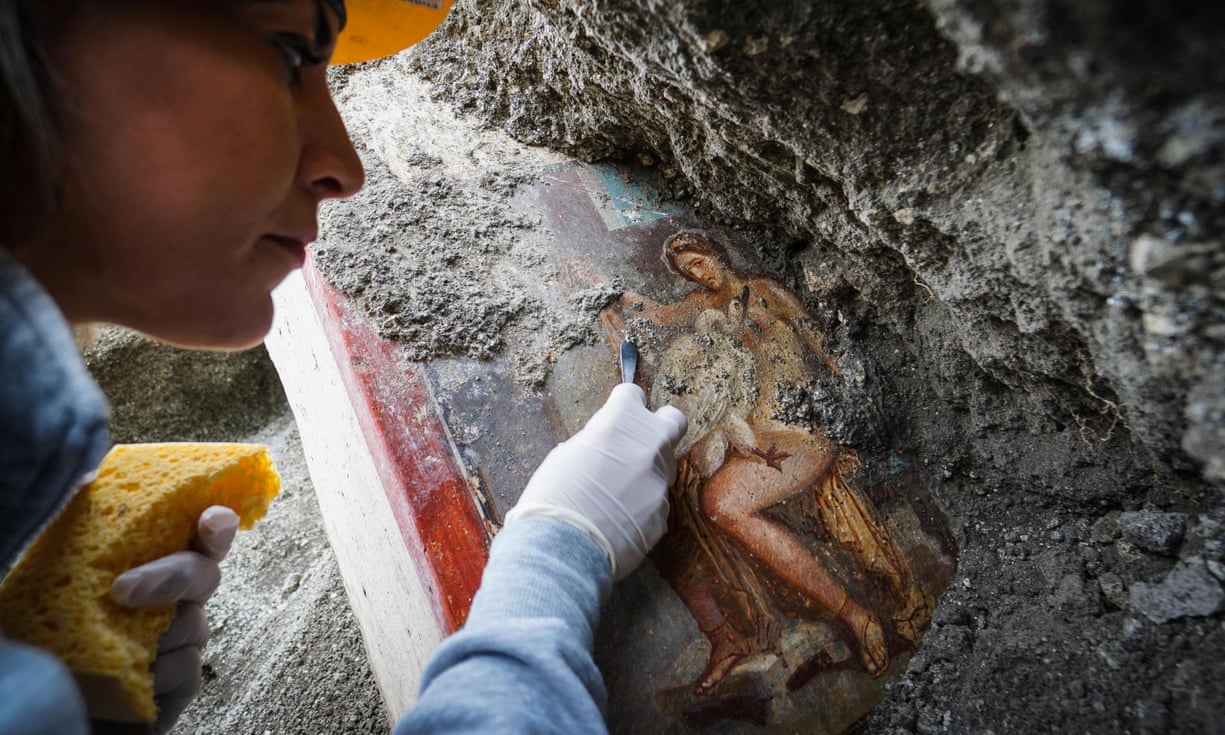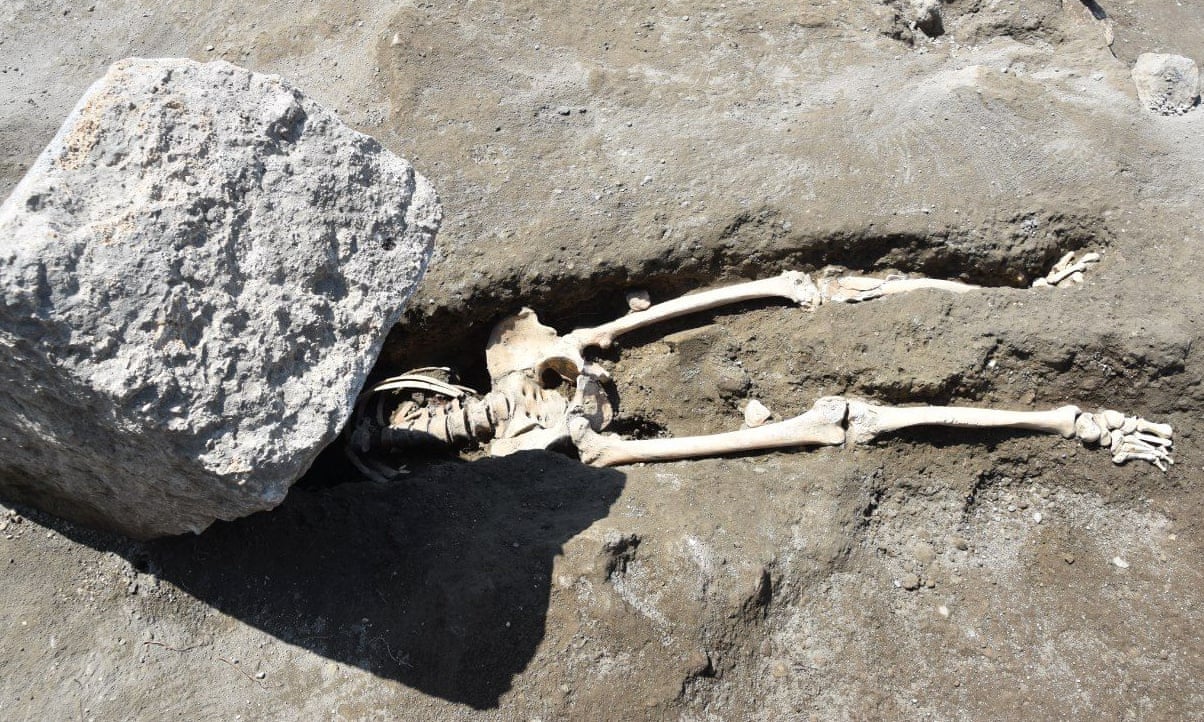DepthReading
New discoveries at Pompeii come amid renaissance at site
Teresa Virtuoso is more than used to digging up tombs. But when the archaeologist found the skeleton of a man who died while trying to escape the catastrophic eruption of Mount Vesuvius in AD79, she couldn’t help but think about his final moments.
“At that moment, it wasn’t only about doing a job,” Virtuoso, who is coordinating excavations in part of Regio V, an entire quarter of the ancient Roman city of Pompeii that is yet to open to the public, told the Guardian.
“It made me think about the eruption and how afraid this man must have been as he ran. He was also found in an area that suffered most of Vesuvius’s damage; it would have been impossible to survive.”
He was the first victim to be found during excavations of Regio V, a 21.8-hectare (54-acre) site to the north of the archaeological park. The dig is the most intensive since the 1960s and symbolises a renaissance at the site, which earlier this decade was overcrowded and in parts crumbling.
Surprises unearthed so far this year include the remains of a horse; a home with an elaborate shrine; well-preserved mosaics and a bedroom fresco depicting an erotic scene from the Greek myth Leda and the Swan.
The discovery of the remains in May was even more startling as it appeared that the man had survived the initial phase of the eruption when the city was blanketed in volcanic ash and pumice. His torso was protruding from a large stone block but rather than being decapitated by it (the first appearance of his image online led some to call him history’s unluckiest man) archaeologist believe he was killed by the lethal gases of the eruption’s later stages.
The first body found in the Regio V excavation. Photograph: Pompeii
The victim, believed to have been in his mid-30s, was also found with a small sack of 20 silver and two bronze coins, the equivalent of about
Category: English
DepthReading
Key words:


